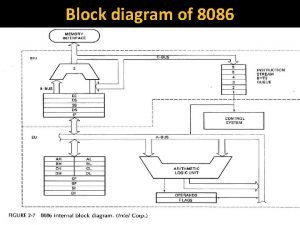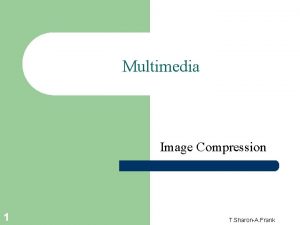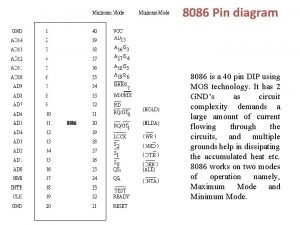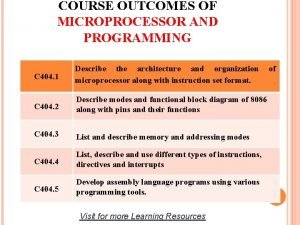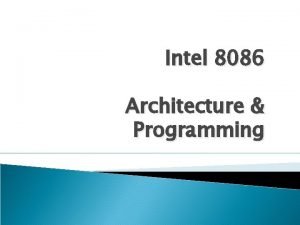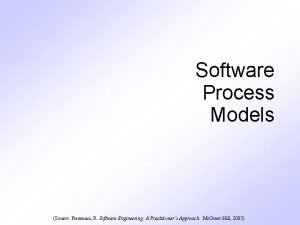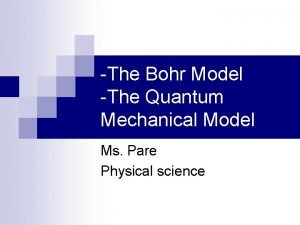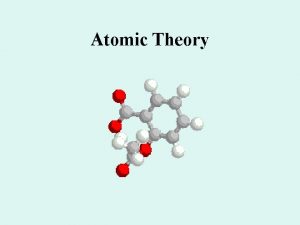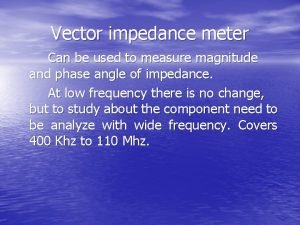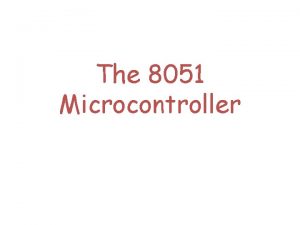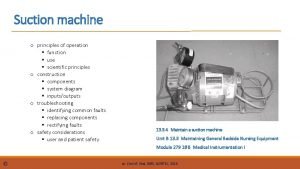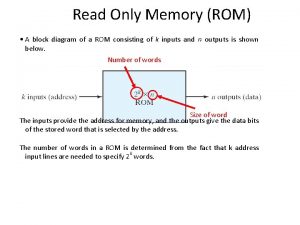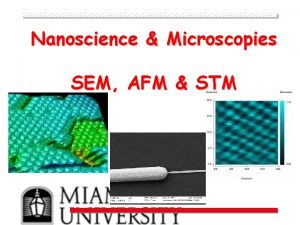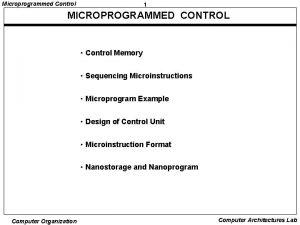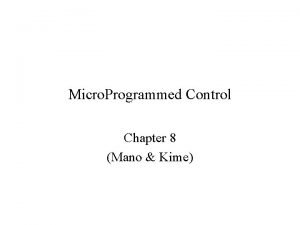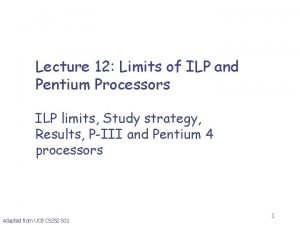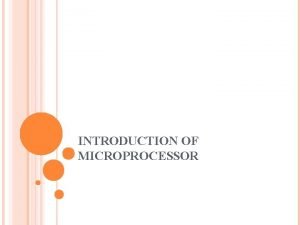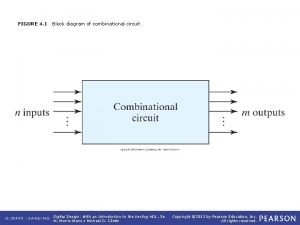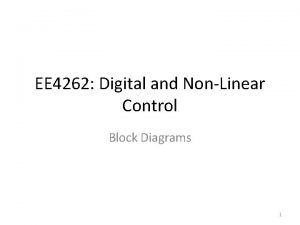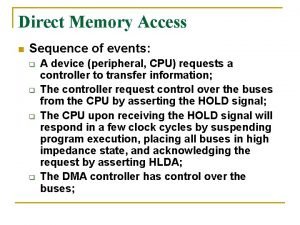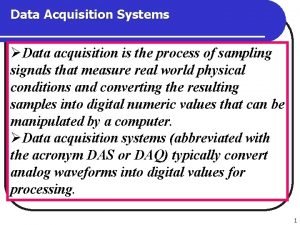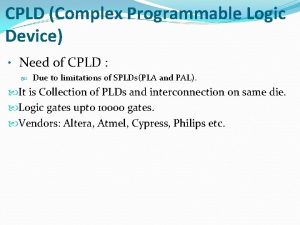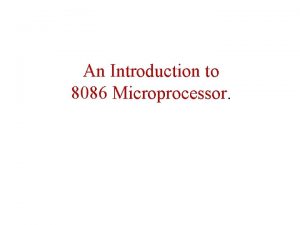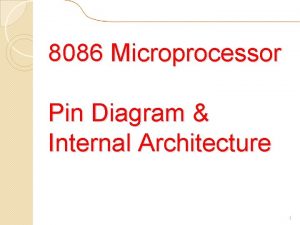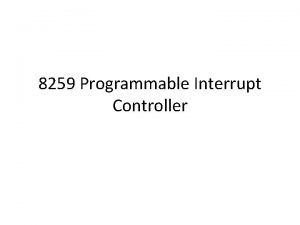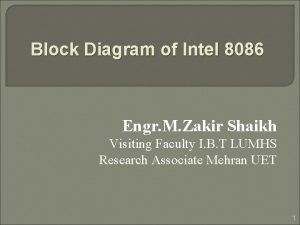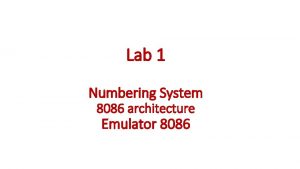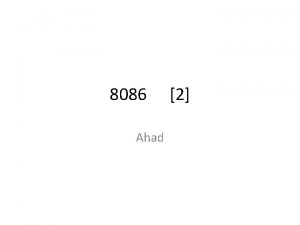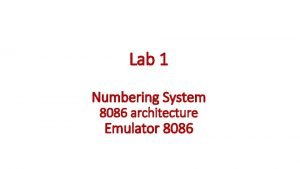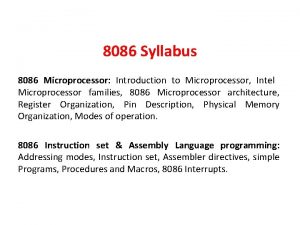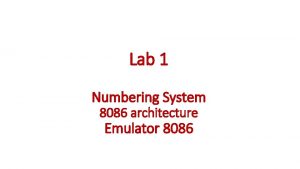Block diagram of 8086 1 Software Model of

Block diagram of 8086 1

Software Model of the 8086 Microprocessors 2

8086 Registers 3

General Purpose Registers AX - the Accumulator BX - the Base Register CX - the Count Register DX - the Data Register • Normally used for storing temporary results • Each of the registers is 16 bits wide (AX, BX, CX, DX) • Can be accessed as either 16 or 8 bits AX, AH, AL 4

General Purpose Registers • AX – Accumulator Register – Preferred register to use in arithmetic, logic and data transfer instructions because it generates the shortest Machine Language Code – Must be used in multiplication and division operations – Must also be used in I/O operations • BX – Base Register – Also serves as an address register 5

General Purpose Registers • CX – Count register – Used as a loop counter – Used in shift and rotate operations • DX – Data register – Used in multiplication and division – Also used in I/O operations 6

Pointer and Index Registers • All 16 bits wide, L/H bytes are not accessible • Used as memory pointers – Example: MOV AH, [SI] • Move the byte stored in memory location whose address is contained in register SI to register AH • IP is not under direct control of the programmer 7

Flag Register Overflow Carry Direction Parity Auxiliary Carry Interrupt enable Trap Zero Sign 6 are status flags 3 are control flag 8

8086 Programmer’s Model ES CS SS DS IP BIU registers (20 bit adder) EU registers AX BX CX DX AH BH CH DH Extra Segment Code Segment Stack Segment Data Segment Instruction Pointer AL BL CL DL SP BP SI DI FLAGS Accumulator Base Register Count Register Data Register Stack Pointer Base Pointer Source Index Register Destination Index Register 9

The Stack • The stack is used for temporary storage of information such as data or addresses. • When a CALL is executed, the 8086 automatically PUSHes the current value of CS and IP onto the stack. • Other registers can also be pushed • Before return from the subroutine, POP instructions can be used to pop values back from the stack into the corresponding registers. 10

The Stack 11

INTEL 8086 - Pin Diagram 12

INTEL 8086 - Pin Details Power Supply 5 V 10% Ground Reset Registers, seg regs, flags CS: FFFFH, IP: 0000 H Clock If high for minimum 4 clks Duty cycle: 33% 13

INTEL 8086 - Pin Details Address/Data Bus: Contains address bits A 15 -A 0 when ALE is 1 & data bits D 15 – D 0 when ALE is 0. Address Latch Enable: When high, multiplexed address/data bus contains address information. 14

INTEL 8086 - Pin Details INTERRUPT Non - maskable interrupt Interrupt acknowledge Interrupt request 15

INTEL 8086 - Pin Details Direct Memory Access Hold acknowledge 16

INTEL 8086 - Pin Details Address/Status Bus Address bits A 19 – A 16 & Status bits S 6 – S 3 17

INTEL 8086 - Pin Details BHE#, A 0: Bus High Enable/S 7 0, 0: Whole word (16 -bits) Enables most significant data bits D 15 – D 8 during read or write operation. 0, 1: High byte to/from odd address 1, 0: Low byte to/from even address S 7: Always 1. 1, 1: No selection 18

INTEL 8086 - Pin Details Min/Max mode Minimum Mode: +5 V Maximum Mode: 0 V Minimum Mode Pins Maximum Mode Pins 19

Minimum Mode- Pin Details 20

Maximum Mode - Pin Details S 2 S 1 S 0 000: INTA 001: read I/O port 010: write I/O port 011: halt 100: code access 101: read memory 110: write memory 111: none -passive Status Signal Inputs to 8288 to generate eliminated signals due to max mode. 21

Maximum Mode - Pin Details Lock Output Used to lock peripherals off the system Activated by using the LOCK: prefix on any instruction DMA Request/Grant Lock Output 22

Maximum Mode - Pin Details QS 1 QS 0 00: Queue is idle 01: First byte of opcode 10: Queue is empty 11: Subsequent byte of opcode Queue Status Used by numeric coprocessor (8087) 23

Minimum Mode 8086 System 24

Minimum Mode 8086 System 25

‘Read’ Cycle timing Diagram for Minimum Mode 26

‘Write’ Cycle timing Diagram for Minimum Mode 27

Maximum Mode 8086 System 28

Maximum Mode 8086 System 29

Maximum Mode 8086 System • Here, either a numeric coprocessor of the type 8087 or another processor is interfaced with 8086. • The Memory, Address Bus, Data Buses are shared resources between the two processors. • The control signals for Maximum mode of operation are generated by the Bus Controller chip 8788. • The three status outputs S 0*, S 1*, S 2* from the processor are input to 8788. • The outputs of the bus controller are the Control Signals, namely DEN, DT/R*, IORC*, IOWTC*, MRDC*, ALE etc. 30

Memory Read timing in Maximum Mode 31

Memory Write timing in Maximum Mode 32

8086 Control Signals 1. ALE 2. BHE 3. M/IO 4. DT/R 5. RD 6. WR 7. DEN 33

Coprocessor and Multiprocessor configuration • Multiprocessor Systems refer to the use of multiple processors that executes instructions simultaneously and communicate with each other using mail boxes and Semaphores. • Maximum mode of 8086 is designed to implement 3 basic multiprocessor configurations: 1. Coprocessor (8087) 2. Closely coupled (8089) 3. Loosely coupled (Multibus) 34

Coprocessor and Multiprocessor configuration • Coprocessors and Closely coupled configurations are similar in that both the 8086 and the external processor shares the: - Memory - I/O system - Bus & bus control logic - Clock generator 35

Coprocessor / Closely Coupled Configuration 36

TEST pin of 8086 • Used in conjunction with the WAIT instruction in multiprocessing environments. • This is input from the 8087 coprocessor. • During execution of a wait instruction, the CPU checks this signal. • If it is low, execution of the signal will continue; if not, it will stop executing. 37

Coprocessor Execution Example Coprocessor cannot take control of the bus, it does everything through the CPU 38

Closely Coupled Execution Example • Closely Coupled processor may take control of the bus independently. • Two 8086’s cannot be closely coupled. 39

Loosely Coupled Configuration • has shared system bus, system memory, and system I/O. • each processor has its own clock as well as its own memory (in addition to access to the system resources). • Used for medium to large multiprocessor systems. • Each module is capable of being the bus master. • Any module could be a processor capable of being a bus master, a coprocessor configuration or a closely coupled configuration. 40

Loosely Coupled Configuration • No direct connections between the modules. • Each share the system bus and communicate through shared resources. • Processor in their separate modules can simultaneously access their private subsystems through their local busses, and perform their local data references and instruction fetches independently. This results in improved degree of concurrent processing. • Excellent for real time applications, as separate modules can be assigned specialized tasks 41

Advantages of Multiprocessor Configuration 1. High system throughput can be achieved by having more than one CPU. 2. The system can be expanded in modular form. Each bus master module is an independent unit and normally resides on a separate PC board. One can be added or removed without affecting the others in the system. 3. A failure in one module normally does not affect the breakdown of the entire system and the faulty module can be easily detected and replaced 4. Each bus master has its own local bus to access dedicated memory or IO devices. So a greater degree of parallel processing can be achieved. 42

WAIT State • A wait state (Tw) is an extra clocking period, inserted between T 2 and T 3, to lengthen the bus cycle, allowing slower memory and I/O components to respond. • The READY input is sampled at the end of T 2, and again, if necessary in the middle of Tw. If READY is ‘ 0’ then a Tw is inserted. 43
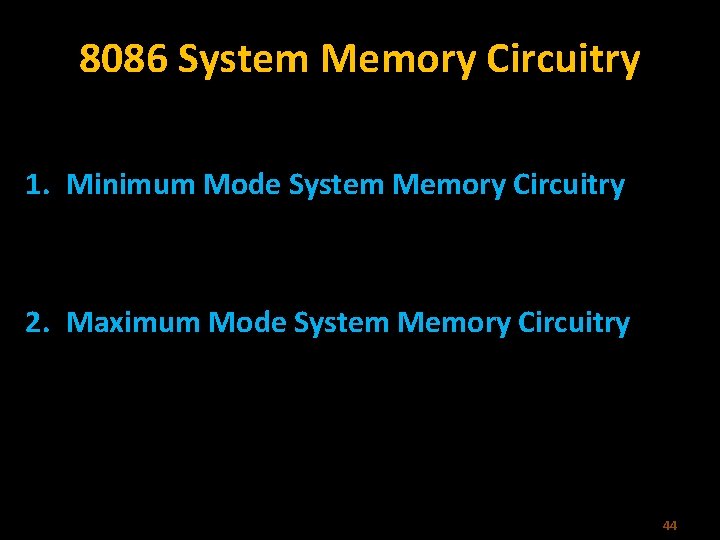
8086 System Memory Circuitry 1. Minimum Mode System Memory Circuitry 2. Maximum Mode System Memory Circuitry 44

Minimum Mode System Memory Circuitry 45
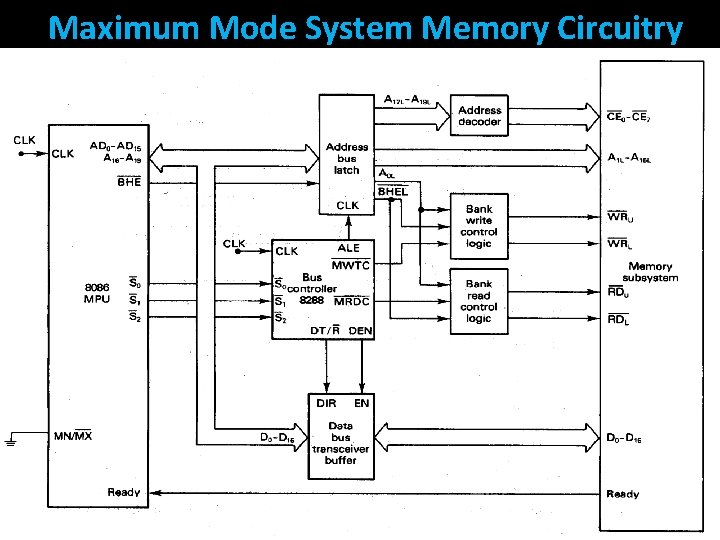
Maximum Mode System Memory Circuitry 46
- Slides: 46


